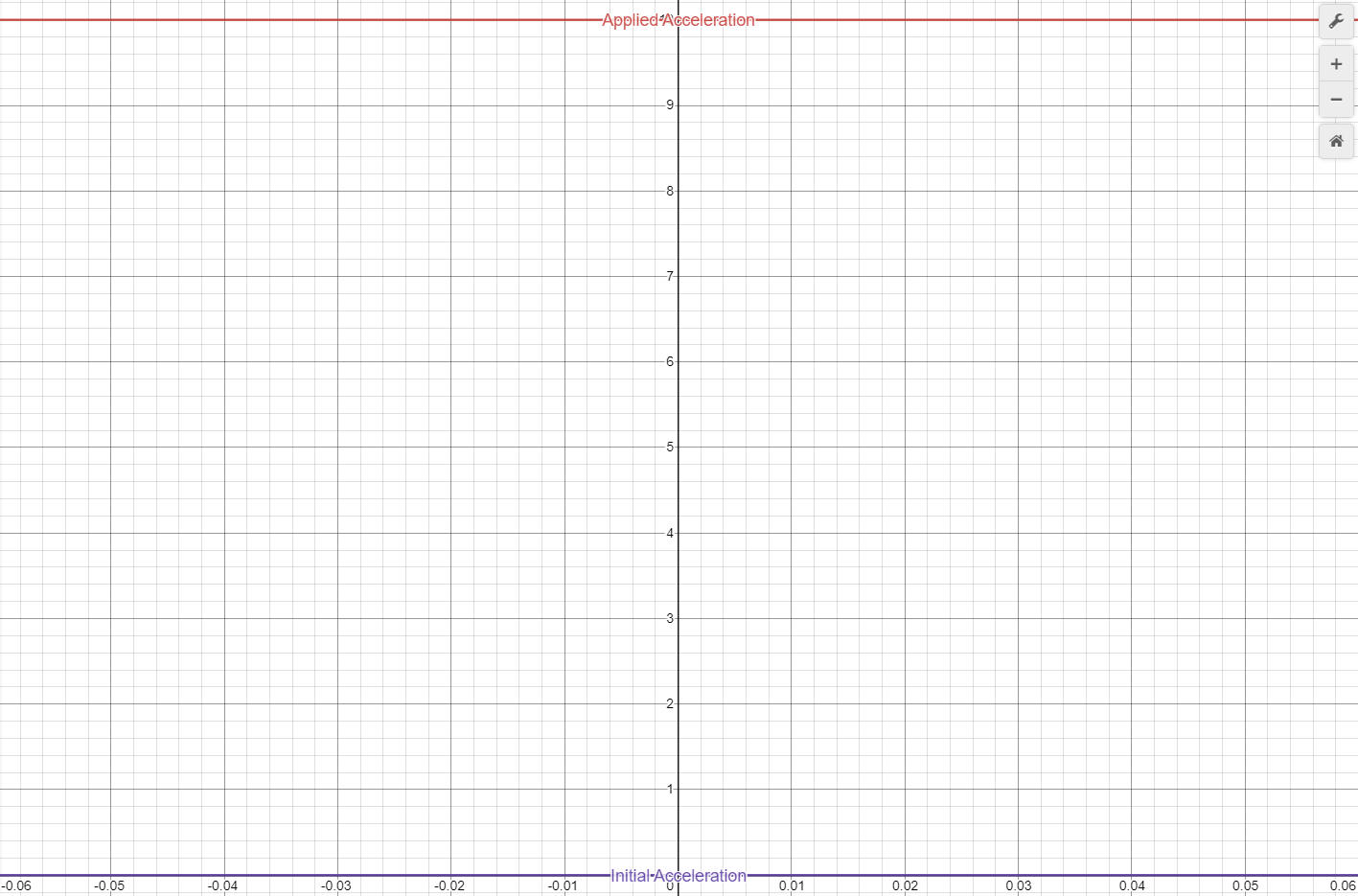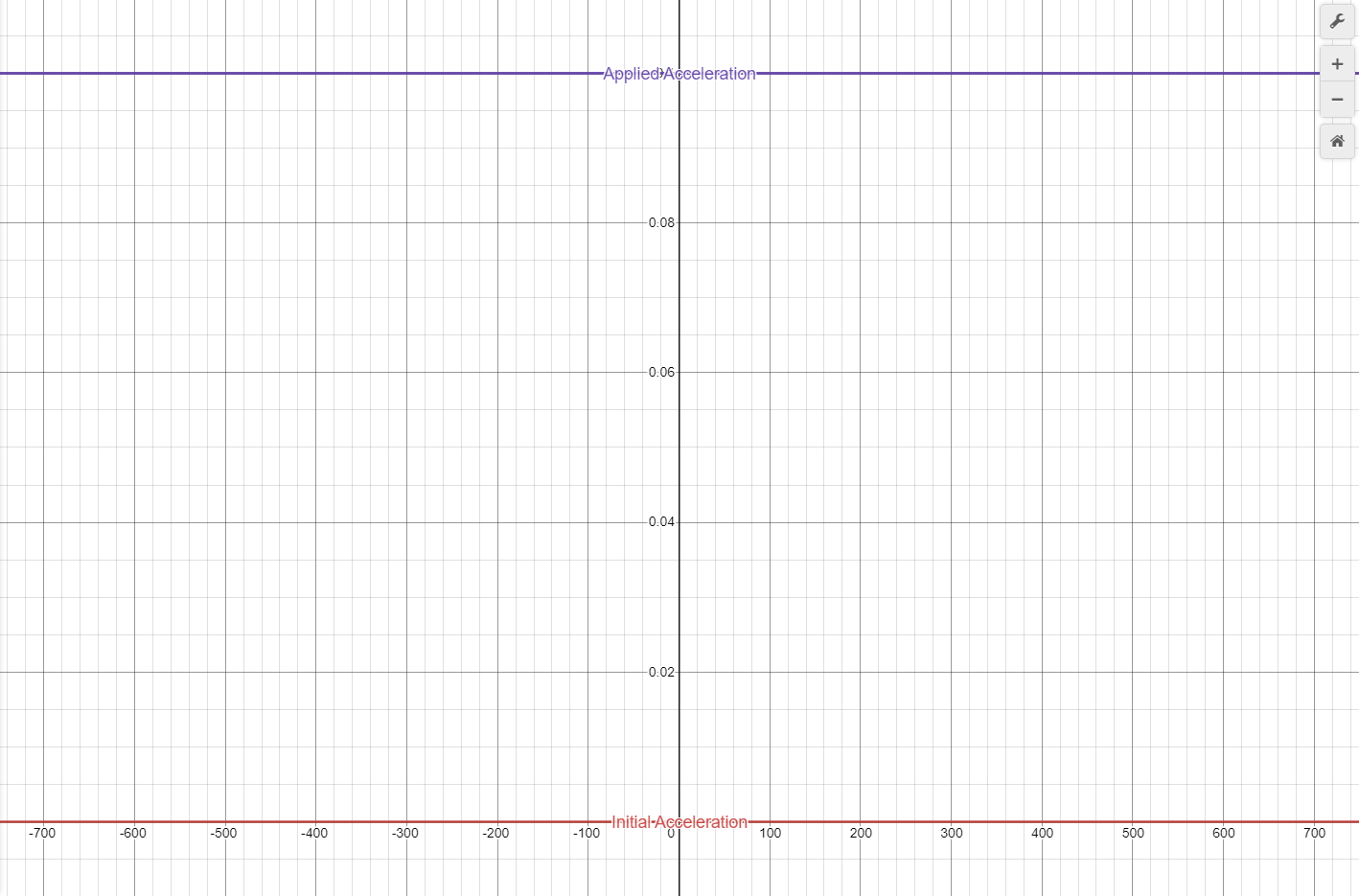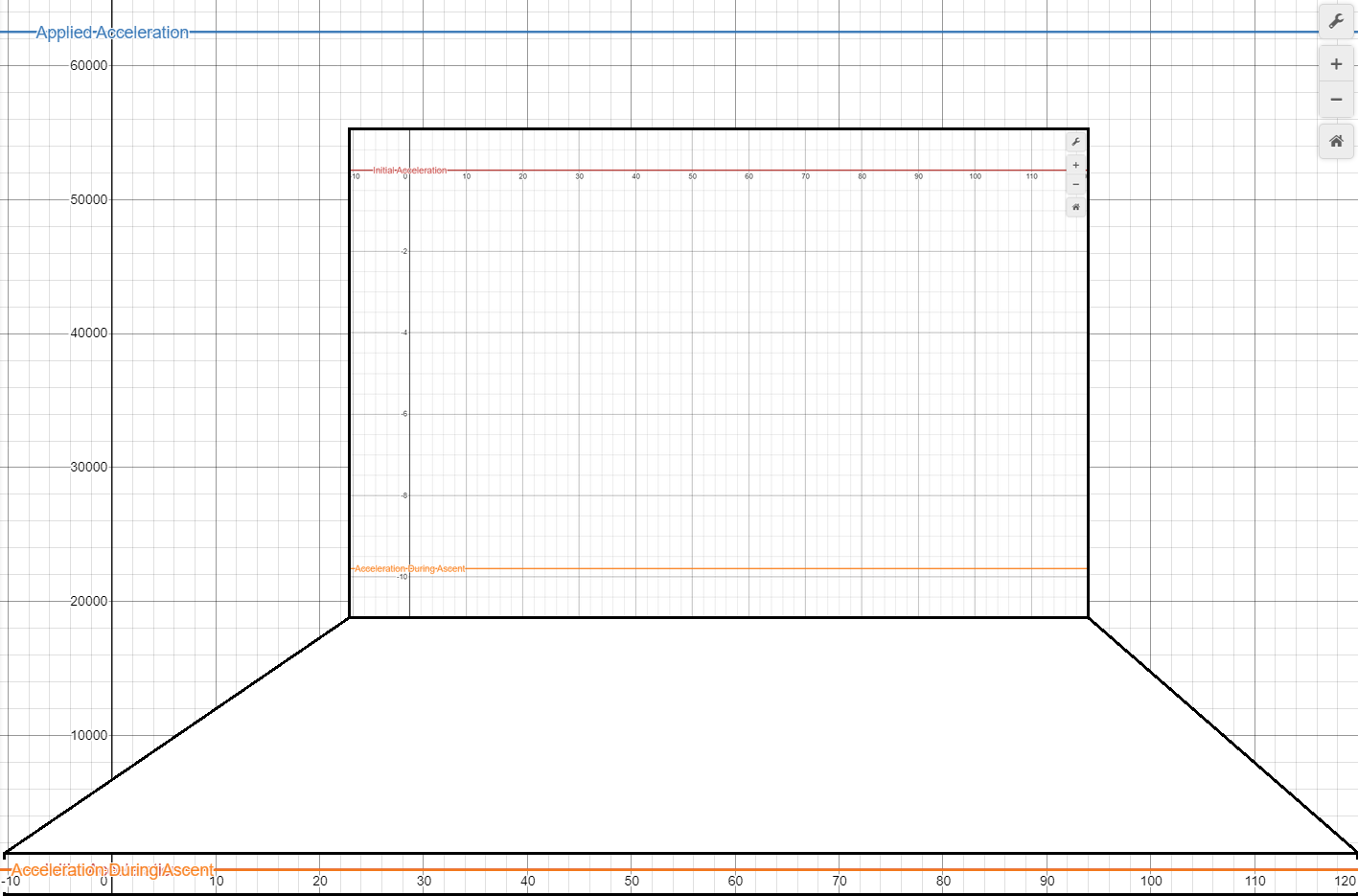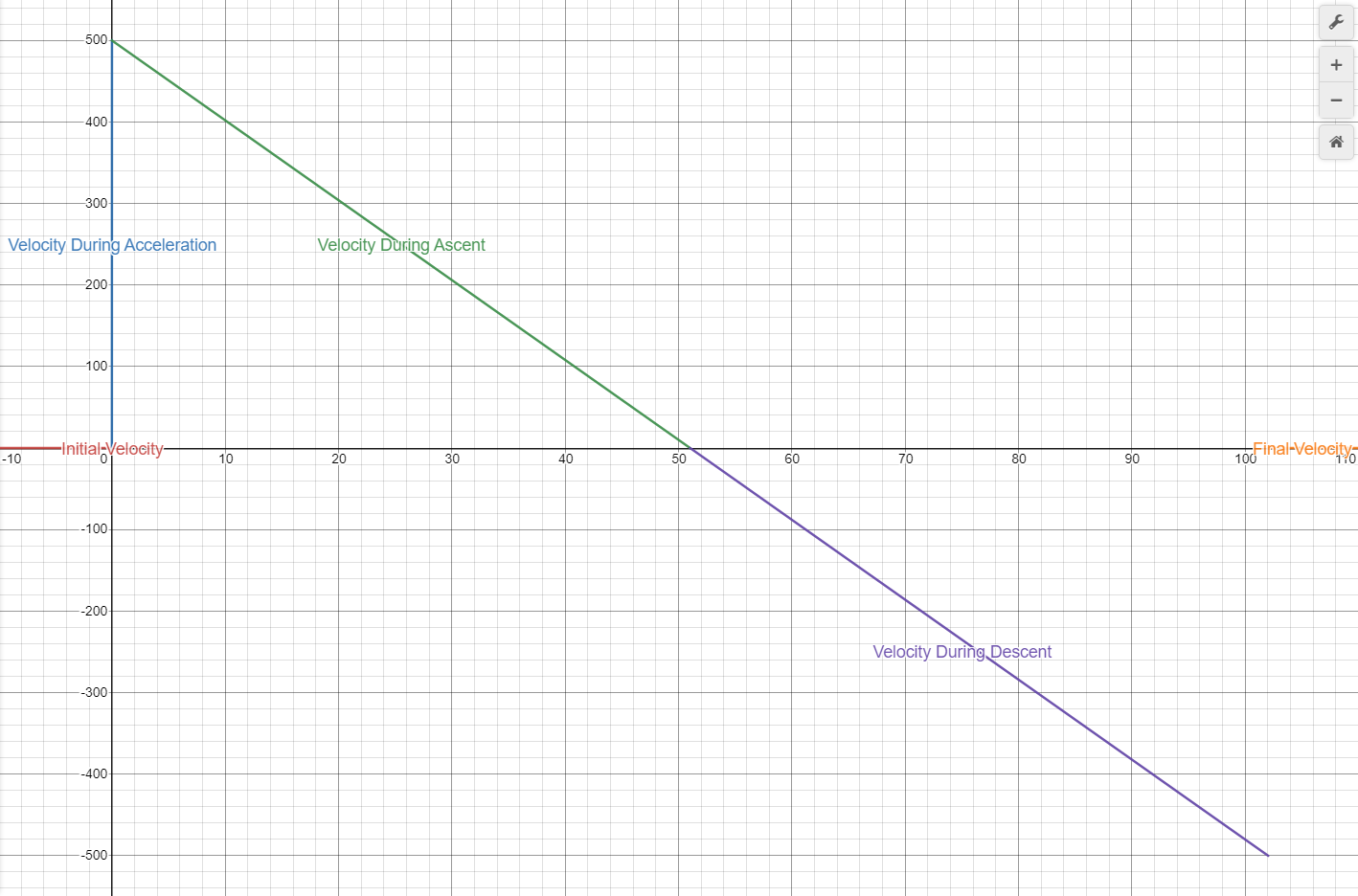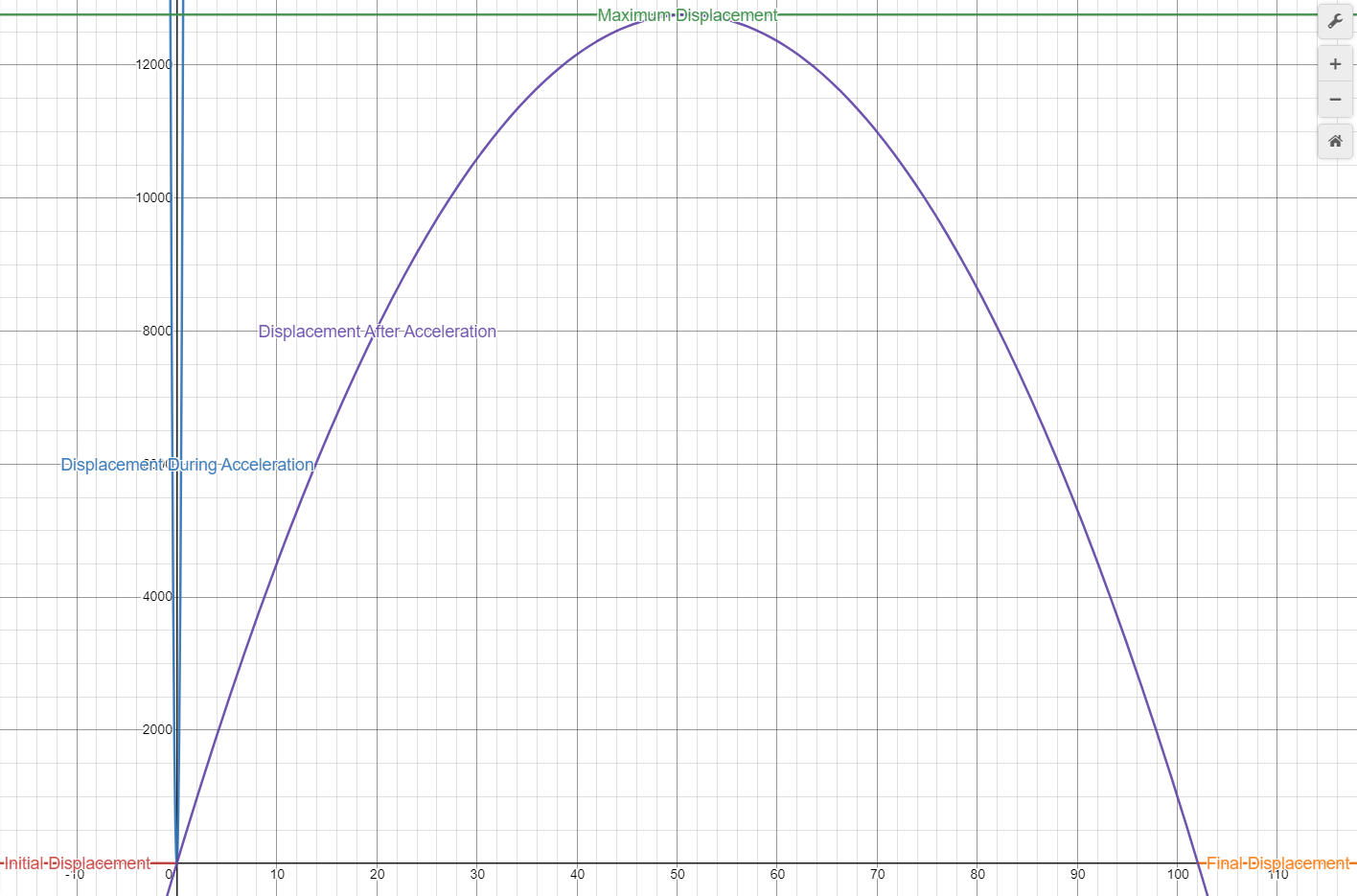Physics 000 - Answers to Last Week's Questions
In last week's physics post we covered basic kinematics in one dimension. This post covers in detail how to solve each of those problems.
Problem 1
- a. What is the velocity of a satellite that travels 75km in 10s?
This problem is a simple task of dividing the distance (or displacement) the satellite traveled, making sure to convert it to meters, by the time it took to traverse that distance
b. How far will the satellite travel in 60s?
By multiplying the velocity by time, the total distance (displacement) can be calculated
c. What would the satellite's acceleration be if its velocity increased by 500m/s over a period of 50s?
Constant acceleration can be calculated by dividing the change in velocity by the time this change occurs
d. What would its final velocity be after this acceleration?
To calculate the satellite's final velocity, simply add the change in velocity to the initial velocity
e. What functions describe the satellites's acceleration, velocity, and distance? What do the curves of each look like when graphed?
Acceleration is straightforward in this case, it is simply 10
https://www.desmos.com/calculator/9kjfn1wkhf
There are several components that need to be considered when deriving the function describing the satellite's velocity, the initial vleocity, acceleration, and final velocity. This results in the following function


Distance, or displacement, takes into account the initial position and velocity, the acceleration, and the final position. Because the initial position is considered to be zero, it can be omitted from the function

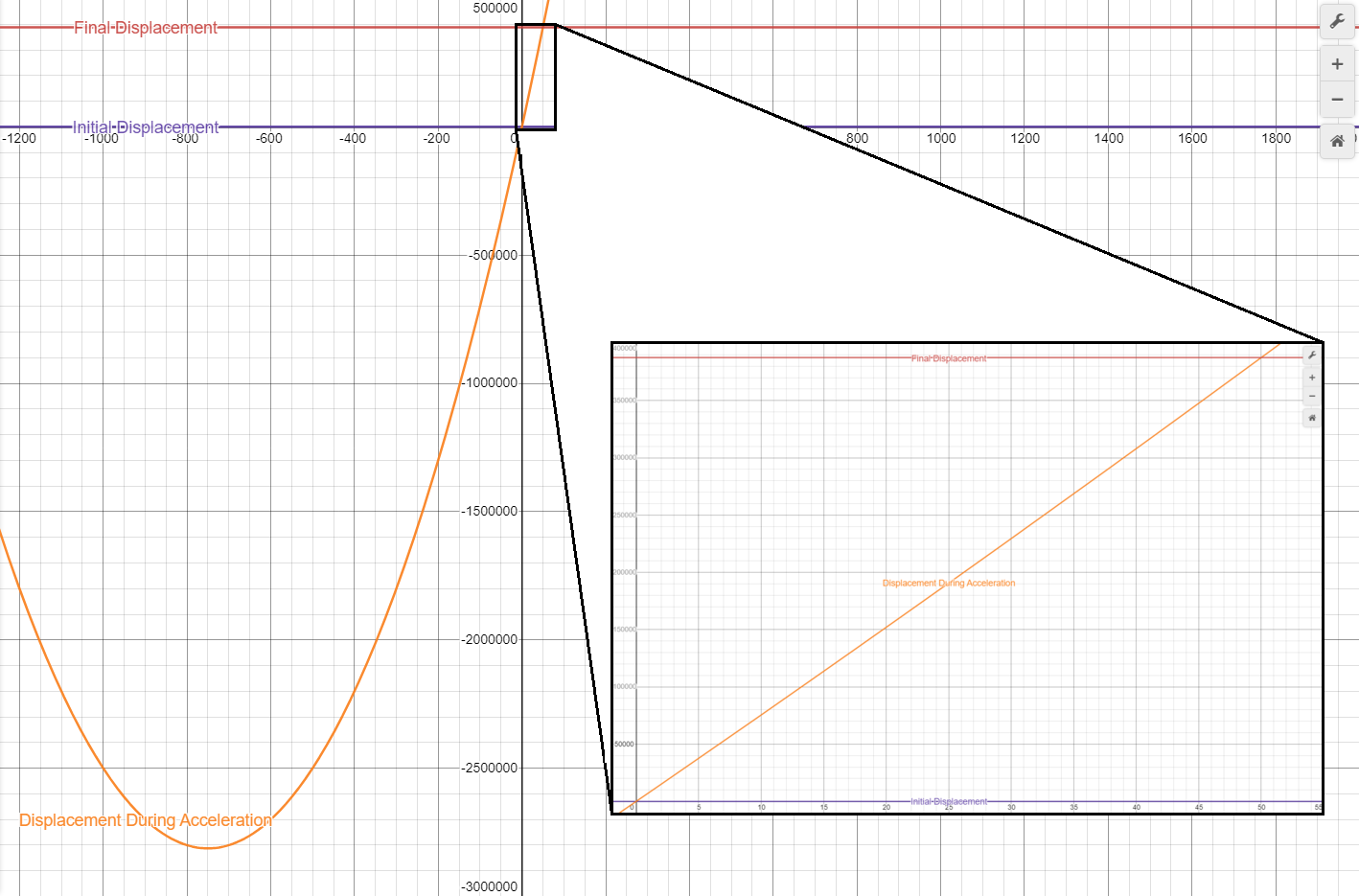
Problem 2
- a. A bullet is shot from a rifle having a 0.5m long barrel. If the bullet's velocity is 600m/s when it leaves the barrel, what is its acceleration?
We know the distance the bullet traveled during the period it was under constant acceleration and will assume the rifle is shooting horizontally; therefore, the appropriate method to solve the problem is
b. How long did it take the bullet to leave the barrel?
The time it takes the bullet to exit the barrel is the change in velocity divided by the acceleration
c. Calculate the values for a and b if the barrel's length was 0.75m.
This question is just a repeat of the previous two, but replaceing the 0.5m barrel with one 0.75m in length
d. What functions describe the bullet's acceleration, velocity, and distance? What do the curves of each look like when graphed?
For the acceleration in each case
https://www.desmos.com/calculator/jnbgbnjejk
And the velocity for each case, since the initial velocity is zero

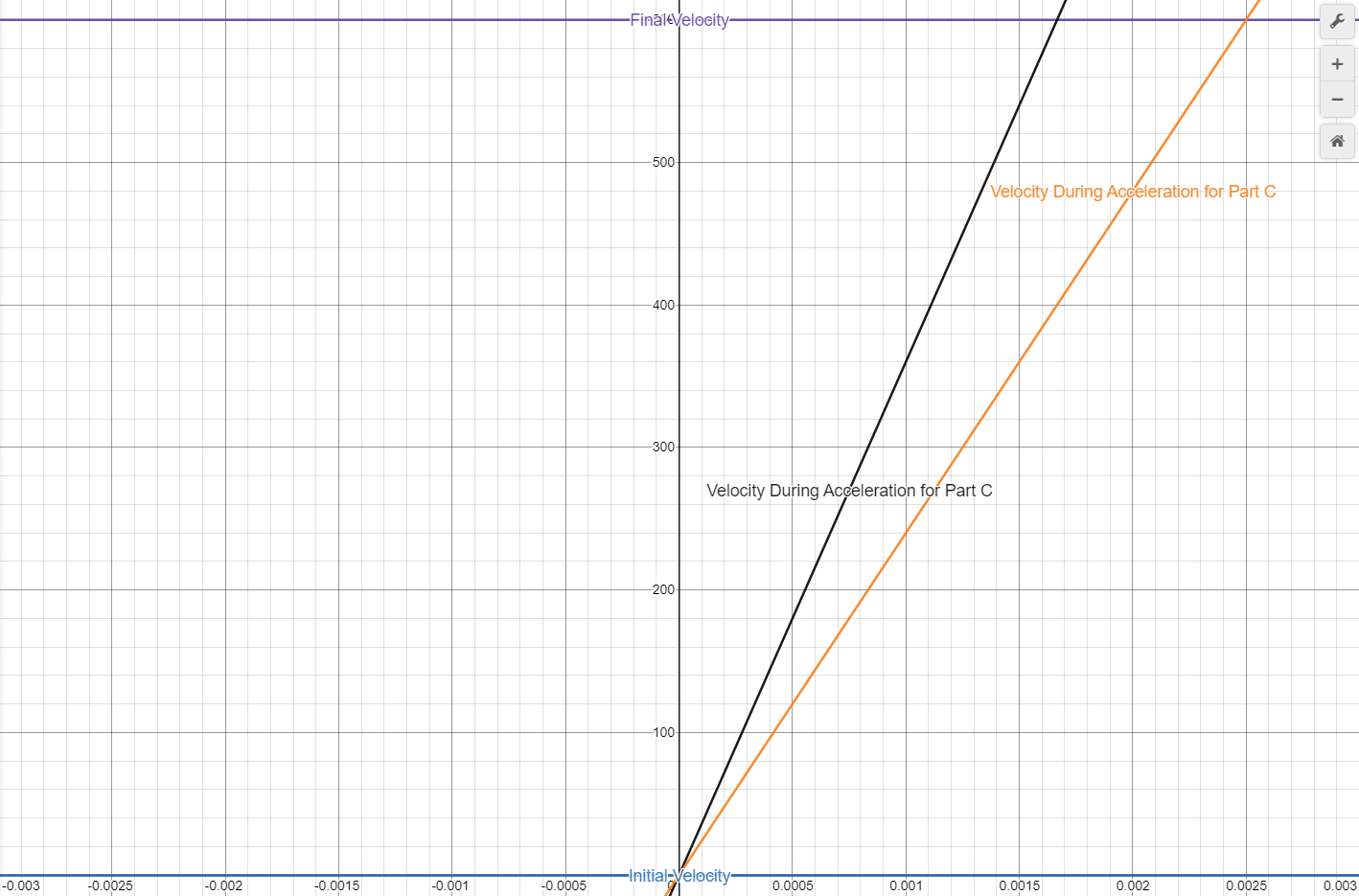
As with the velocities, the initial displacements are zero; therefore, the displacements are


Problem 3
- a. A train sits stopped 15km from a city at 10:00am. If the train has a top speed of 100km/h and can accelerate at 0.1m/s/s, what time would the train reach the city at maximum speed?
The first calculation is to find out how long it takes the train to accelerate to its maximum speed, making sure to convert km/h to m/s. This is done in part b. Next the distance the train travels at maximum speed needs to be calculated. This is done in part c. Finally, the results from part c are divided by the train's maximum velocity to get the total time traveled during this perios, which is then added to the result from part b. The time of arrival is then calculated
b. How much time would it take the train to accelerate to maximum speed?
c. How far would the train travel while moving at its maximum speed?
To solve this we need to know how far the train travels while accelerating, then subtract the result from the distance from the city the train started at
d. What functions describe the train's acceleration, velocity, and distance? What do the curves of each look like when graphed?
The train's acceleration is
https://www.desmos.com/calculator/mshcmfeld7
The train's velocity is simple for this problem

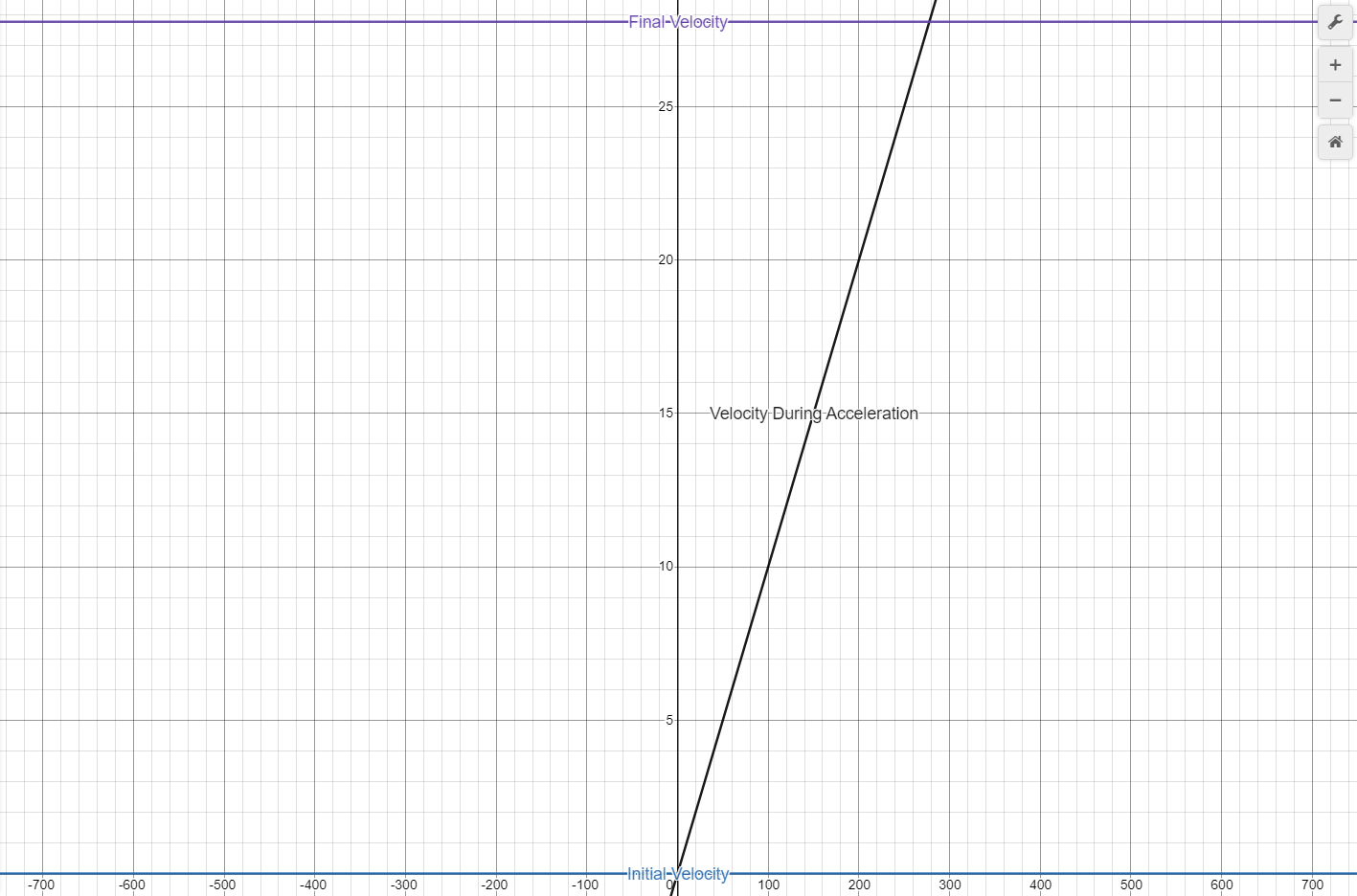
The displacement graph for this problem is unique because it is composed of two functions, one describing the displacement during acceleration and another describing the displacement after acceleration. The former takes the form of a quadratic, while the latter is linear. The train accelerates along the green curve until it reaches its maximum velocity, at which point it cannot accelerate further. From here, the train's displacement is described by the blue curve.


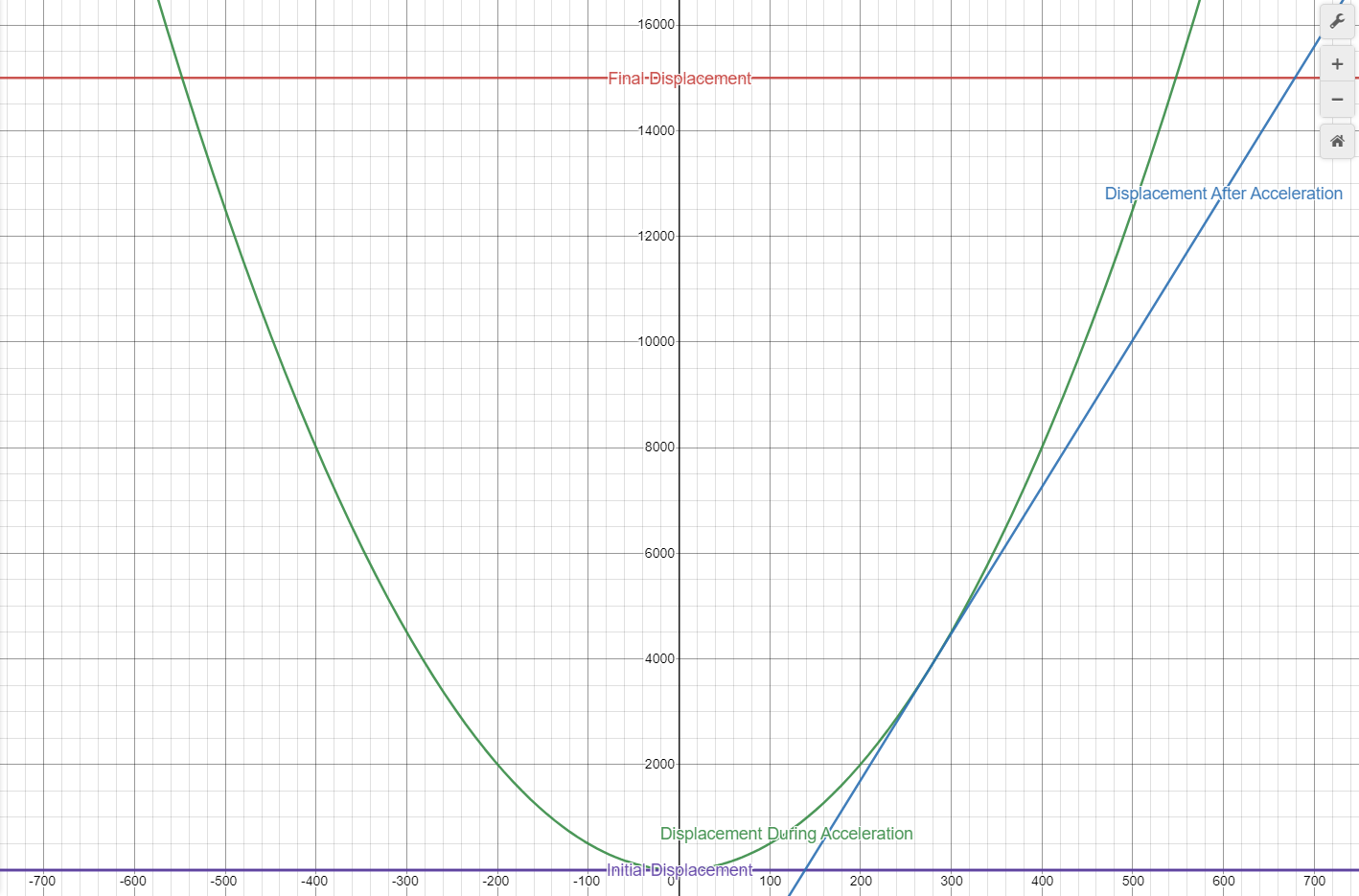
Problem 4
a. The velocity of an aircraft is 250m/s at 9:30am and 260m/s at 9:31am. How far did it travel during that time?
This question should be solved by first solving part b, then using the result to calculate

b. What was its acceleration during that time?
Acceleration is the change in velocity divided by the time required to change the velocity

c. What functions describe the aircraft's acceleration, velocity, and distance? What do the curves of each look like when graphed?
The acceleration is

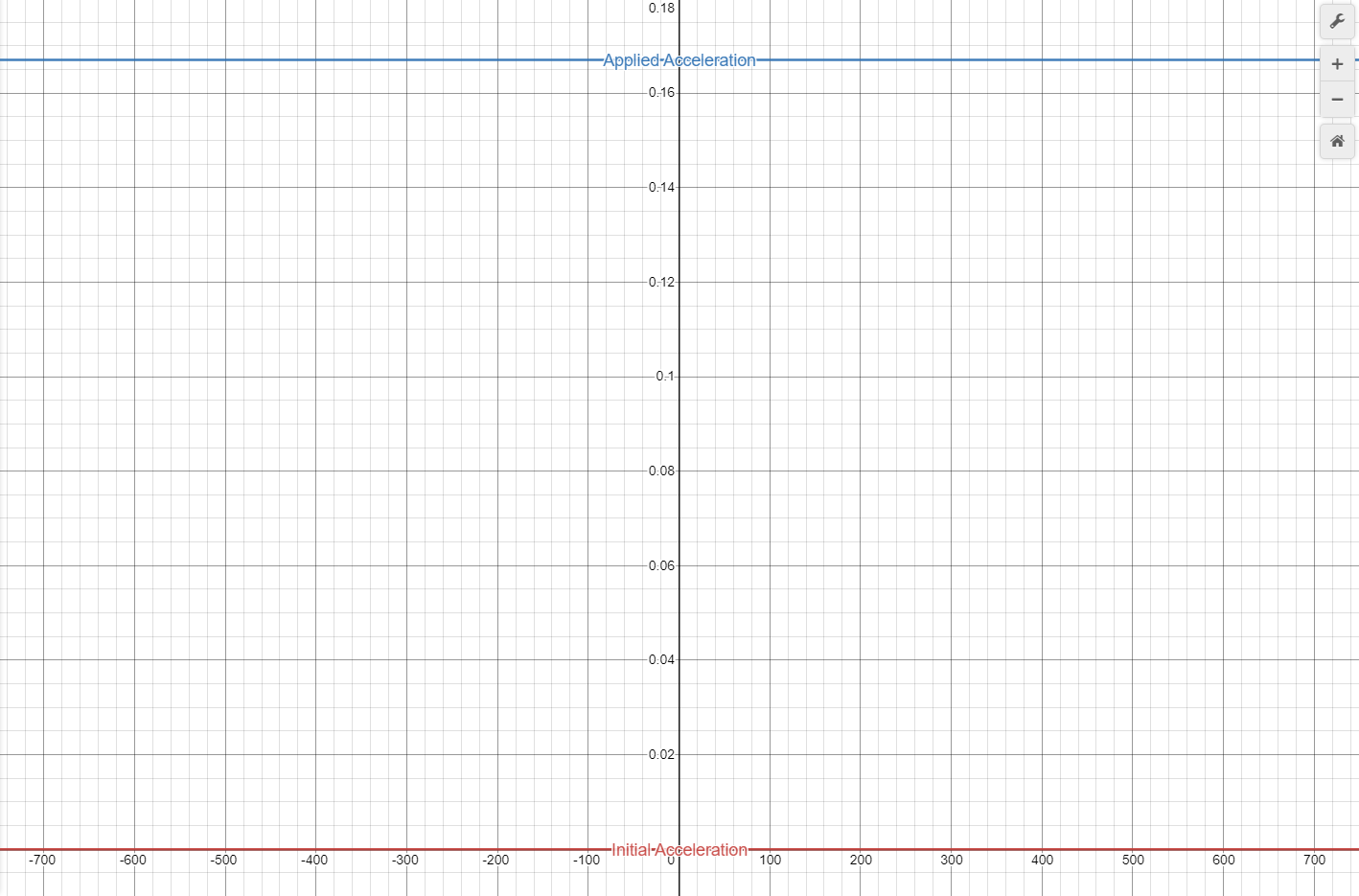
The velocity for this problem must take into account the aircraft's initial velocity, thus

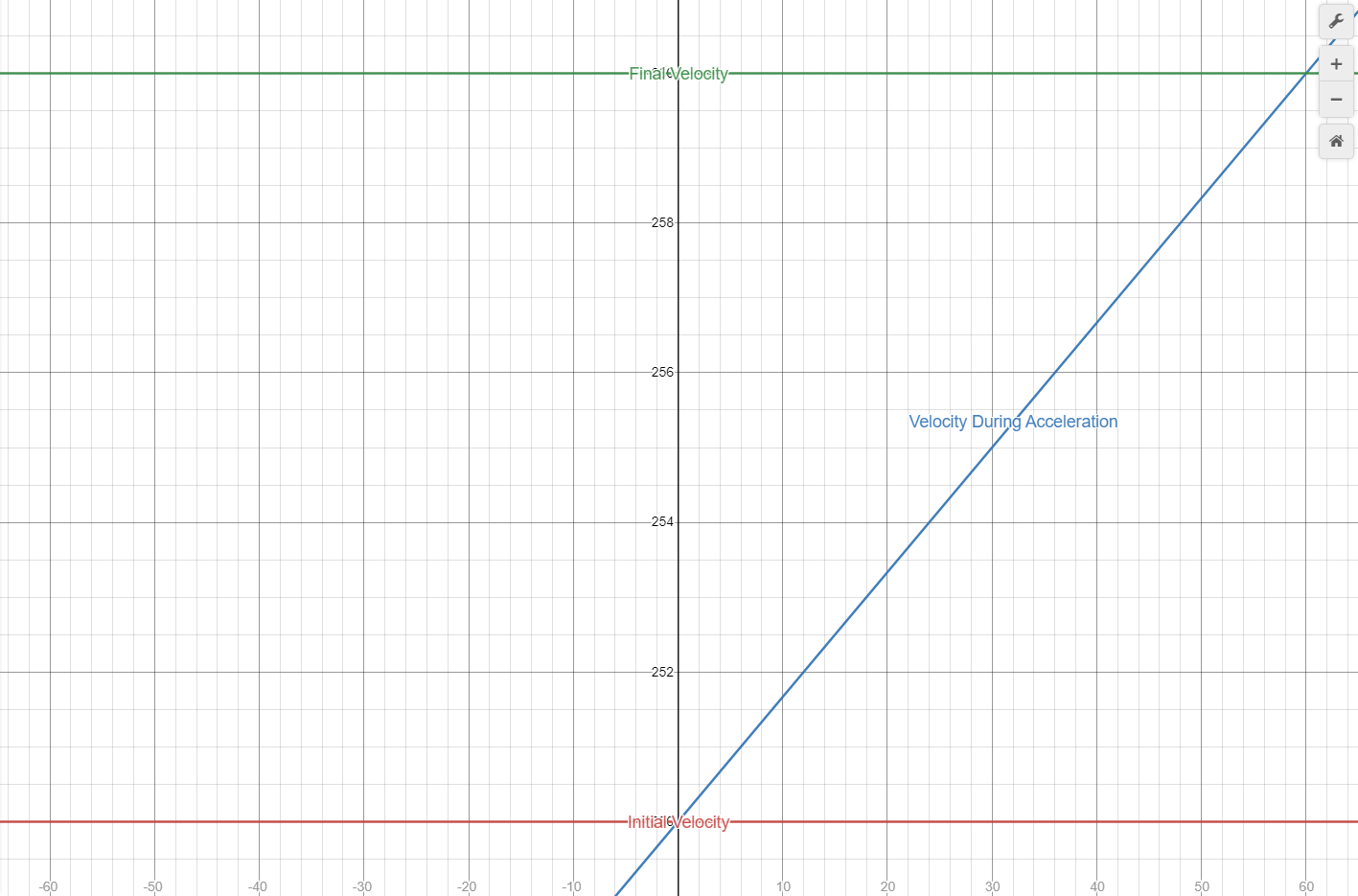
Displacement is assumed to be zero when the acceleration begins, and as with velocity, the aircraft's initial velocity must be accounted for

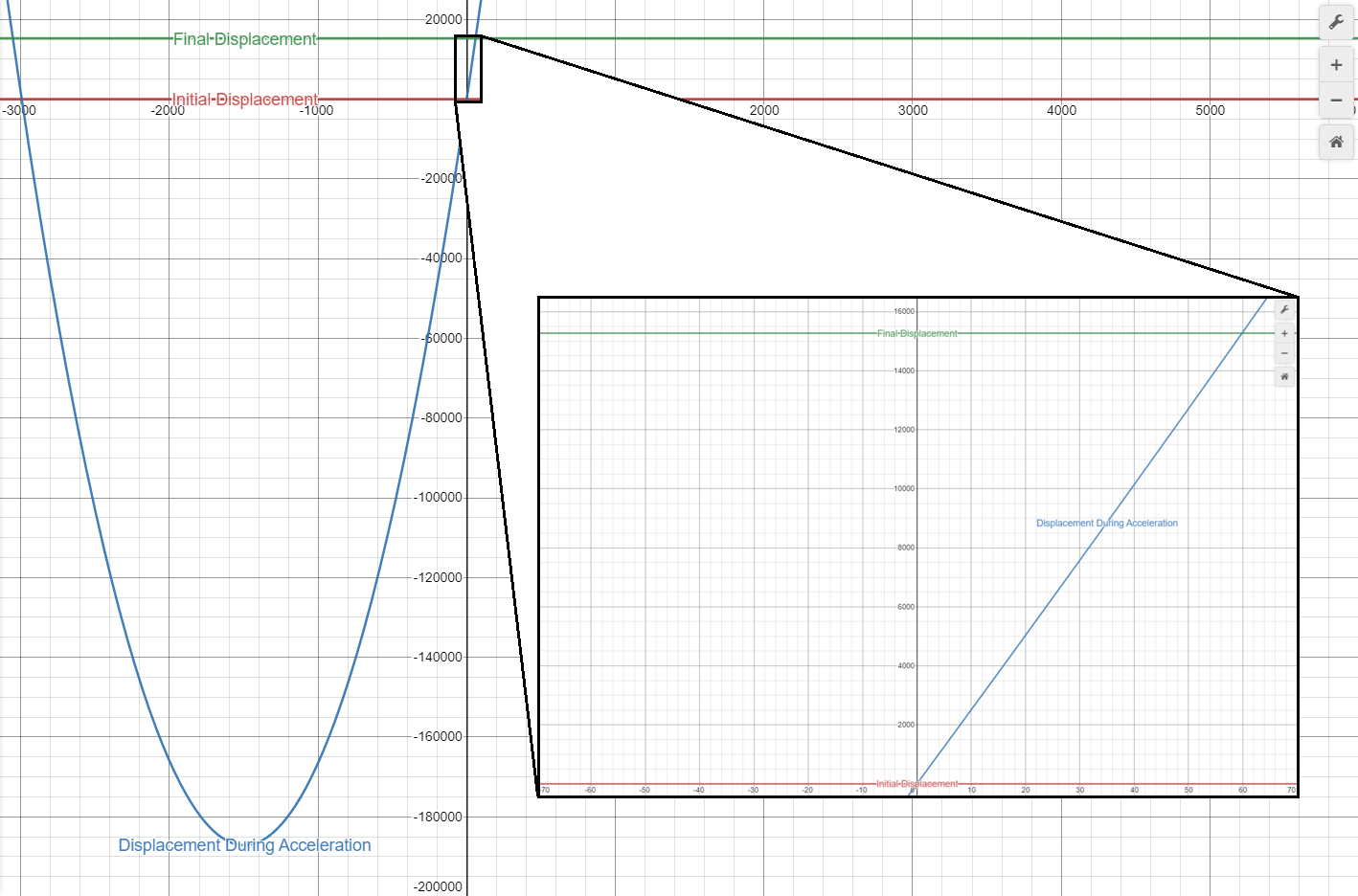
Problem 5
- a. A car is moving at 25m/s when the car's driver applies the brakes. What is the car's acceleration if the car comes to a stop in 2.5s?
Acceleration is change in velocity divided by the time it took for the velocity to change. Notice acceleration is negative for this problem
b. How far does the car travel during these 2.5 seconds?
c. What functions describe the car's acceleration, velocity, and distance? What do the curves of each look like when graphed?
Unlike the previous questions, the acceleration for this question is negative

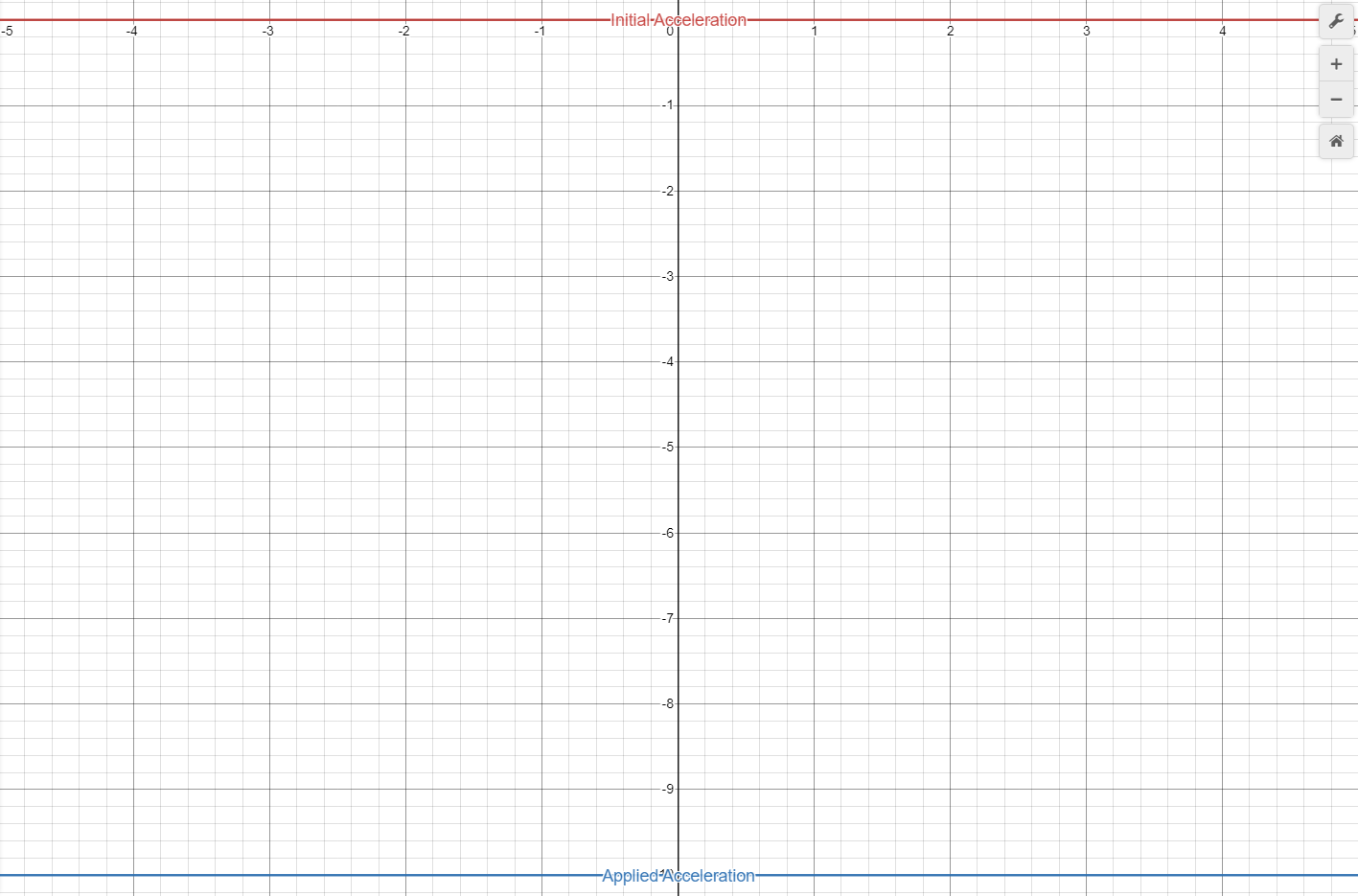
Because this question includes an initial velocity, it must also be included in the function

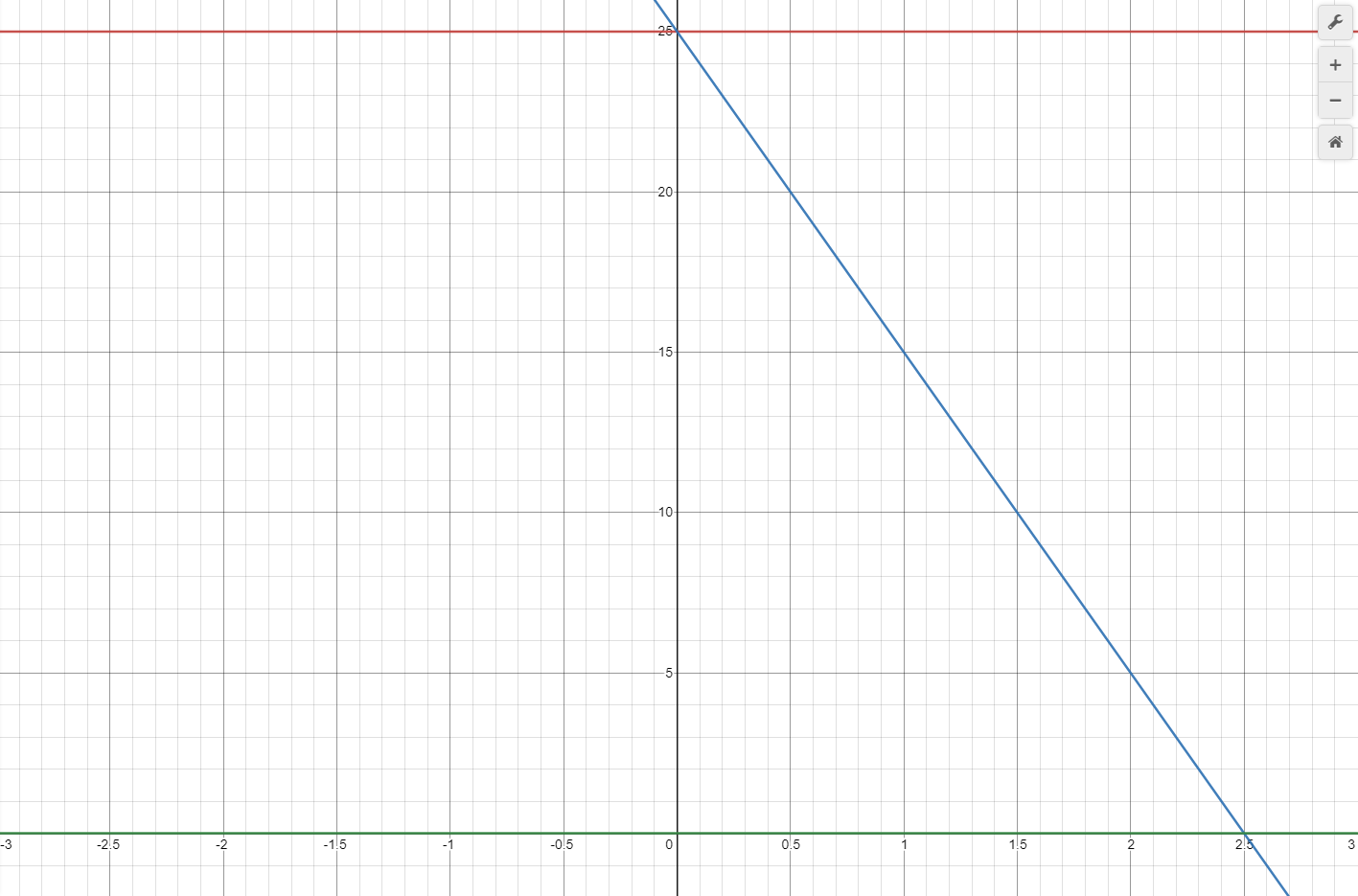
The displacement function must include the initial velocity

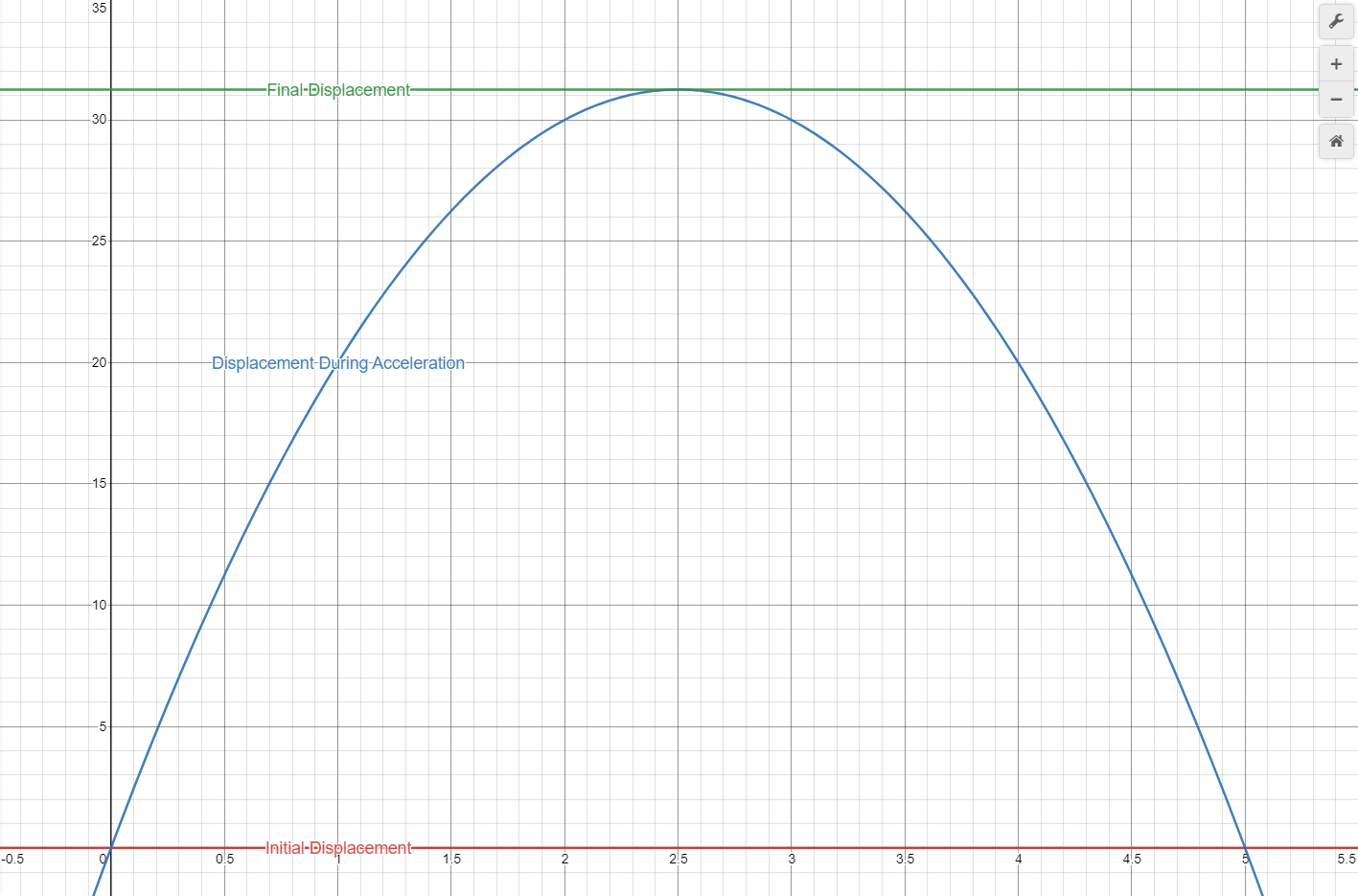
Problem 6
a. A projectile is shot from a vertically mounted gun that is 2m long. It leaves the gun with a velocity of 500m/s. How high does the projectile go?
Solving this question requires several steps, the first of which is to solve part C. The result from part C can then be used to calculate the projectile's maximum displacement (altitude) accounting for the 2m barrel length

b. How long does it take the projectile to hit to the ground after the gun's trigger is pulled?
This is a two or three part problem depending on how accurate the result needs to be. First, the time of ascent and time of descent are calculated and added together


This is the less accurate answer, and the slightly more accurate answer requires adding the time the bullet spent while being accelerated in the gun

Therefore, the total time elapsed from the pull of the trigger until the bullet hits the ground is about 102.052 seconds (102.044 + 0.008)
c. What was the acceleration of the projectile while in the gun?
Acceleration here is the same as the previous gun question, except the acceleration due to Earth's gravity (g) must be taken into account because the gun is firing vertically. To do this, the acceleration problem is solved

Then negative g is subtracted from the result
=62509.8m/s^2)
d. What is the projectile's velocity when it hits the ground?
This can be solved when part A is known, making sure to remember the initial velocity is zero at maximum displacement (altitude)

The negative velocity here is purely a point of reference. Someone standing on the ground might consider the bullet to have negative velocity because it is falling back to Earth; however, from the bullet's view the velocity could be considered positive if it is falling point-first.
e. What functions describe the bullet's acceleration, velocity, and distance? What do the curves of each look like when graphed?
There are two accelerations which need plotted, the initial acceleration while in the gun, and the acceleration due to Earth's gravity after the bullet leaves the gun
This graph requires three velocities, one as the bullet is leaving the gun, one forvelocity on ascent, and one for velocity during descent. Notice the velocities for ascent and descent have the same slopes and intersect at y = 0, when the bullet is at maximum displacement
Displacement increases dramatically while the bullet is being accelerated in the gun, then approaches maximum before falling back to Earth. Plotted as displacement vs time this curve forms a parabolic shape
Posted with STEMGeeks





